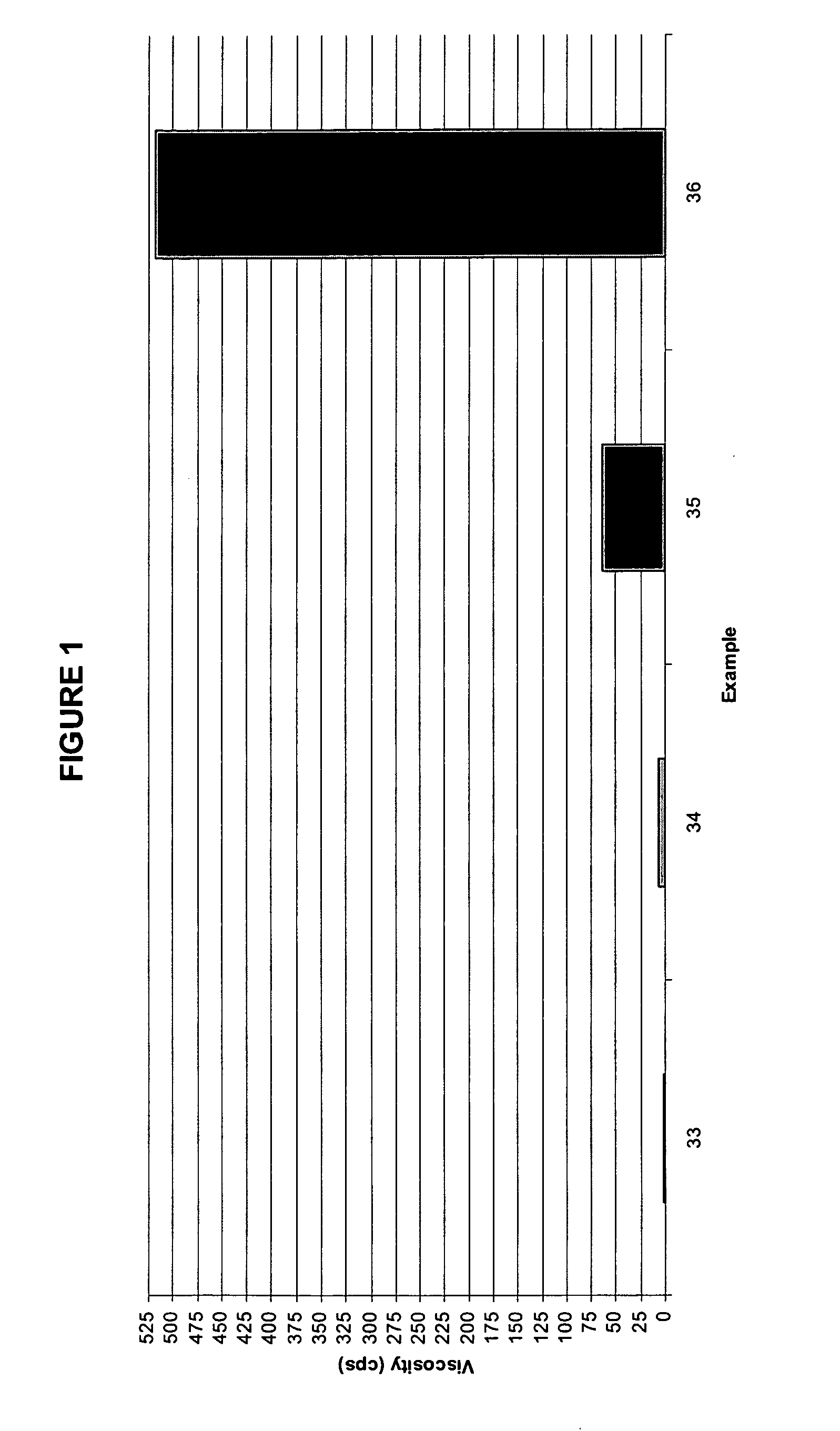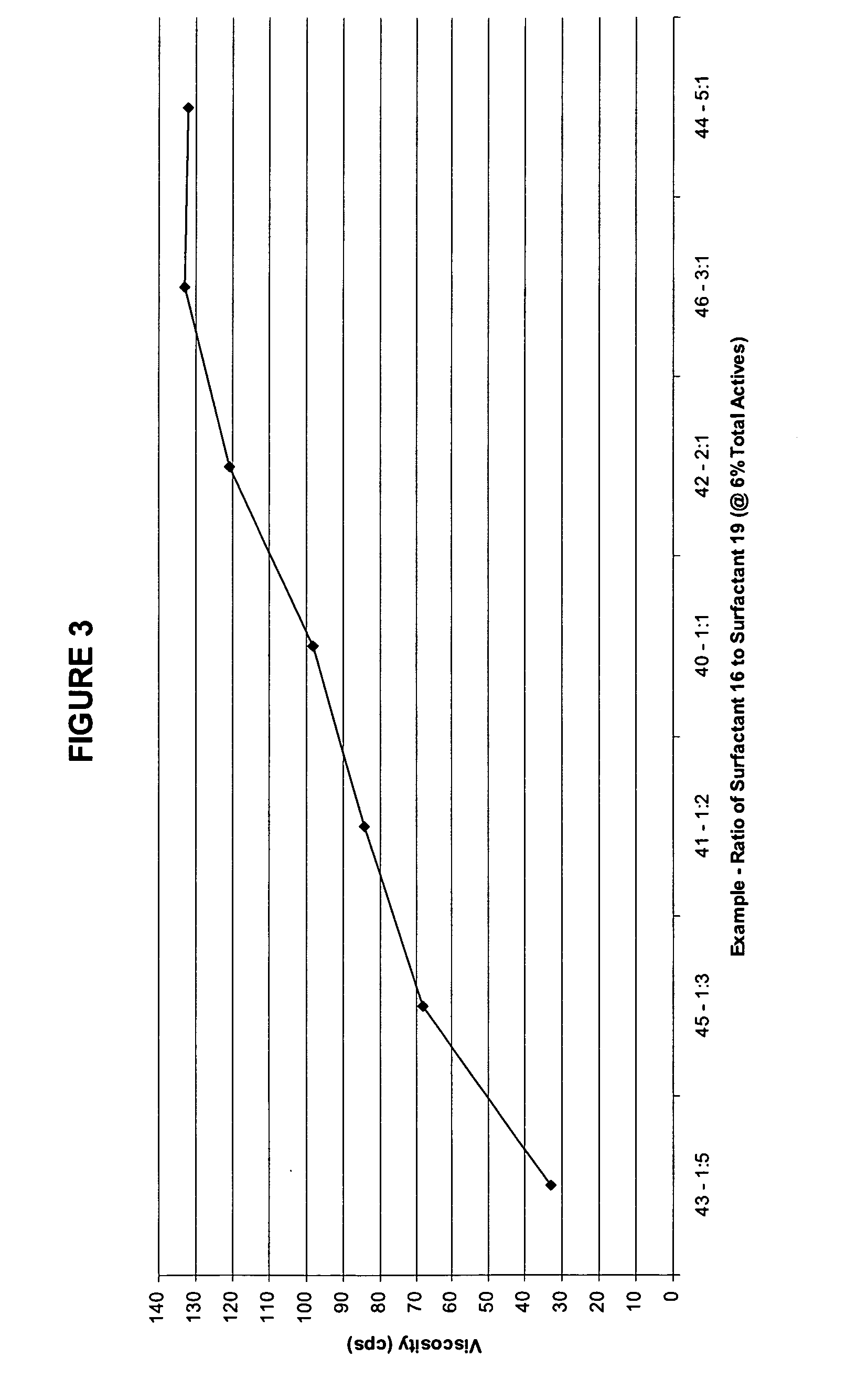Cleaning Composition And Method Of Forming The Same
a technology of cleaning composition and composition, applied in the field of cleaning composition, can solve the problems of inferior cleaning properties such as cleaning power when compared to higher viscosity cleaning composition, decrease in viscosity of cleaning composition, and increase in solubility, and achieve desirable viscosity profiles. , the effect of excellent detergency characteristics
- Summary
- Abstract
- Description
- Claims
- Application Information
AI Technical Summary
Benefits of technology
Problems solved by technology
Method used
Image
Examples
examples
[0047]A series of detergent compositions are prepared according to the present invention. Specifically, amounts of the surfactants are added to a vessel and mixed to prepare the detergent compositions. In addition to the surfactants, e.g. the cleaning composition, the detergent compositions further include a control load, which is described below. Two control detergent compositions (Control Examples 1 and 2 found below in Table I) are prepared for comparison with the Examples.
[0048]Viscosities of each of the Examples are determined at ˜21° C. (70° F.) with a Brookfield viscometer set at a speed of 30 RPM, using a #2 spindle. Due to tolerances of the Brookfield viscometer, any viscosity values of zero in the tables below are about equal to the viscosity of water. Aqueous cloud points of the surfactants present in the Examples are determined by adding 1% by weight of the surfactant to water and heating until a visual change in appearance is noted such as a phase separation. Stability ...
PUM
 Login to View More
Login to View More Abstract
Description
Claims
Application Information
 Login to View More
Login to View More - R&D
- Intellectual Property
- Life Sciences
- Materials
- Tech Scout
- Unparalleled Data Quality
- Higher Quality Content
- 60% Fewer Hallucinations
Browse by: Latest US Patents, China's latest patents, Technical Efficacy Thesaurus, Application Domain, Technology Topic, Popular Technical Reports.
© 2025 PatSnap. All rights reserved.Legal|Privacy policy|Modern Slavery Act Transparency Statement|Sitemap|About US| Contact US: help@patsnap.com



